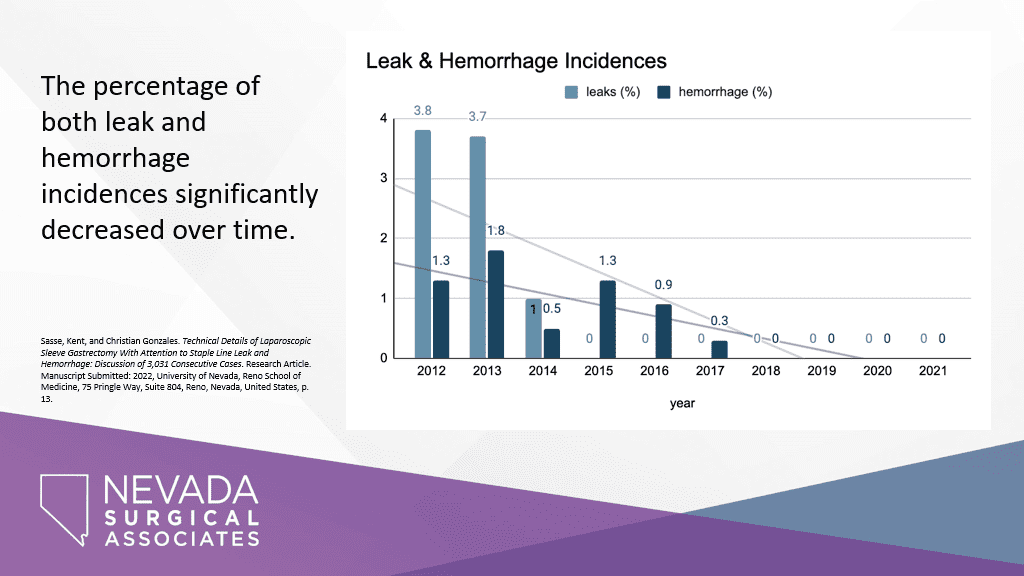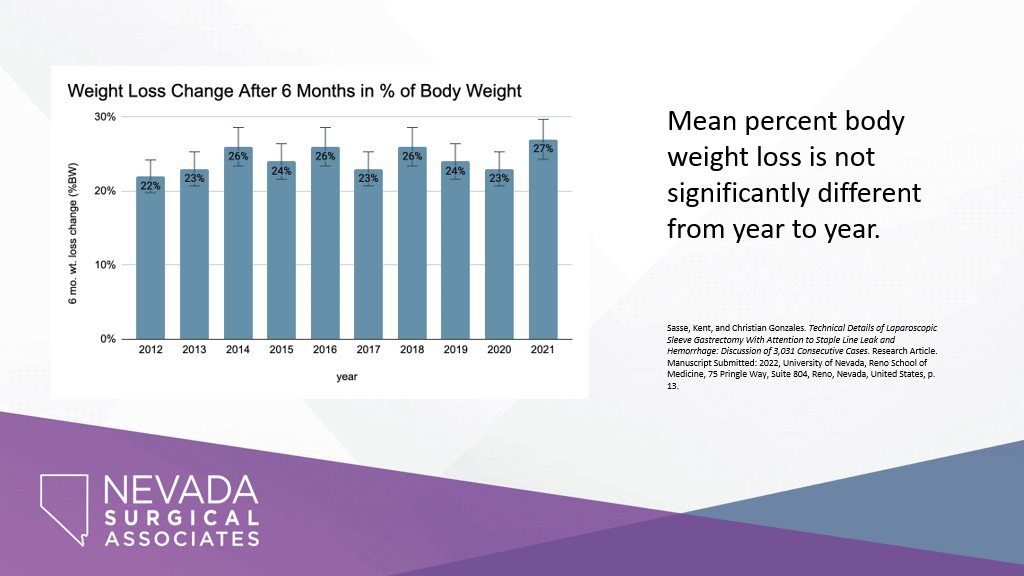Identifying the elements that create the “perfect sleeve” has been a topic of debate among surgeons and academic centers ever since the sleeve gastrectomy came on the scene. There are a number of important considerations, so let us walk through them and see if we can identify the current state of the art for this procedure.
Elements of the Perfect Sleeve Gastrectomy
Safety and minimal complications are the top priorities for a perfect sleeve. But effectiveness in delivering the desired result for the patient is certainly a very close second.
Safety and minimizing complications have been the primary focus here at Nevada Surgical and other centers around the world. A number of years ago, we instituted an intensive plan to illuminate complications of the staple line, which are primarily manifested as leak and hemorrhage in this procedure. In our publications, we have identified several critical elements that have successfully eliminated leak for the last five years and have reduce the incidence of hemorrhage to the range of one in one thousand cases, which is quite an improvement from standard rates. The elements involve a meticulous process that utilize staple and reinforcement materials and attention to the geometry of the gastric sleeve, preservation of blood flow, and use a sealant material along the staple line.
Delivering the best possible outcome means improving the weight loss and reducing or eliminating complications. The graphs below demonstrate the results of our intensive efforts to reduce or eliminate the primary complications of sleeve gastrectomy. In recent years, these have become near zero events due to technical improvements that are outlined in a formal paper on the topic.
The “perfect sleeve” is a goal certainly, and efforts like this one from many centers around the world help reduce risks while delivering exceptional results in treating obesity and type 2 diabetes.

Maximizing the effectiveness at treating obesity and type two diabetes has meant a focus on understanding the hormonal mechanism by which sleeve gastrectomy creates the results. Research laboratory has published a tremendous amount of work on the stomach micro anatomy and mild electrical physiology, while other centers have identified the hormonal cellular components and mapping. These improved data have allowed us to tailor the tissue resection to maximize the effectiveness, beginning the sleeve gastrectomy a distance three or 4 cm proximal to the pylorus and removing the outer gastric tissue along the fundus and up to the cardio region, one to 2 cm lateral to the gastroesophageal junction.
Of course, for patients, efficacy is specific to weight loss following the procedure. Weight loss results have remained consistent over the last ten years, as depicted in the following chart:

Future research will be directed at understanding the primary hormonal mechanisms of reducing obesity and eliminating type 2 diabetes that occur after sleeve gastrectomy. For now, laparoscopic sleeve gastrectomy offers an effective solution for individuals struggling with obesity and obesity-related health conditions like hypertension, diabetes, sleep apnea and degenerative joint disease, through a safe, 45-minute procedure.
The Takeaway
As with any complicated process, the success and the repeatability require a systemic approach. With a gradually iterating system approach, safety and effectiveness are improved in many types of endeavors including airline travel, manufacturing processes and surgical technique. In this fashion, we continue to get closer and closer to the perfect sleeve and deliver the best results for our patients.
Learn more about whether you might be a candidate for metabolic surgery. Contact the Nevada Surgical team today.
Reference: Warner, D.L. and Sasse, K.C., 2017. Technical details of laparoscopic sleeve gastrectomy leading to lowered leak rate: discussion of 1070 consecutive cases. Minimally invasive surgery, 2017.




